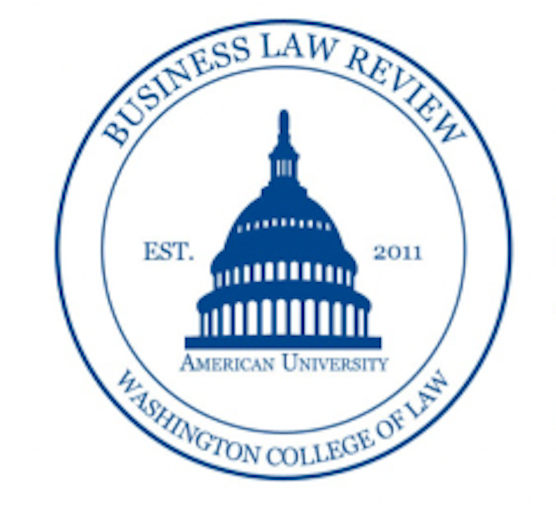Despite the classification of nearly 40% of Americans as obese, the group has seen little legal protection.[1] Recent studies showed that obese people systematically earn less, are promoted less, and face more discrimination than ethnicity-based discrimination.[2] Additionally, the correlation between welfare benefits applications and obesity is at an all-time high at nearly 40% of applicants in 2013.[3] The perception of self-infliction and blameworthiness may underlie the phenomena; however, the legitimacy of obesity accommodations are questioned while other self-inflicted conditions such as self-inflicted back injuries are not.[4] While it is true these negative perceptions may be at play, the legal protections, or lack thereof, further facilitate this phenomena.
The Americans With Disabilities Act (“ADA”) was enacted to eliminate workplace discrimination based on disabilities and require employers to provide reasonable accommodations; however, the ADA’s narrow definition of “disability” led to great jurisdictional variations as to what qualified as a disability.[5] Without a qualified disability, the employer owes no obligation to accommodate and little recourse when discrimination exists. The 2008 ADA Amendment Act (“ADAAA”) expanded protections by defining a “disability” as any “physical or mental impairment” that substantially “limits a major life activity.” [6] The ADAAA notably attempted to shift the analysis from whether someone meets the statutory definition of disability to an individual analysis of whether the accommodation requested is reasonable.[7]
Despite this broad definitional shift, defining “disability” still proves challenging.[8] Under the original ADA, it was well established that obesity was not considered a disability.[9] Since the ADAAA’s expansion, only one notable case has arisen.[10] The 8th Circuit held in Morriss v. BNSF Railway Co. that obesity may be a disability but only if it stems from an underlying physiological disorder or condition such as diabetes, or hypertension.[11] Morriss was offered a job as a railroad machinist but his job offer was revoked, not based on his lack of performance, but based on his weight alone.[12] The court stated that since weight is not a result of a physiological disorder, it cannot be an impairment; rather, it must be a characteristic in the same sense eye color is a characteristic.[13]
Now, a petitioner in the 7th Circuit, Mark Richardson, seeks to try, the same material facts as BSNF, as Richardson alleges that Chicago Transit Authority (“CTA”) fired him for being obese.[14] CTA first placed Richardson on leave after he weighed in at 600 pounds.[15] After 18-months of leave, Richardson failed the CTA safety assessment due to his stomach obstructing hand-over-hand turning of the steering wheel and due to his foot touching both the break and gas petal at the same time, known as ”cross-pedaling.”[16] The District Court followed the BNSF precedent to grant summary judgment in favor of CTA stating that obesity is not a disability.[17]
The larger issue is that the 8th Circuit seemed to read in an element of causation by essentially saying: obesity is a disability when it is caused by another condition, but obesity is not a disability if caused by someone’s choices.[18] BNSF did not consider whether Morriss could adequately perform the job.[19] BNSF neither evaluated whether a physical condition impacted his ability to perform major life functions nor whether a reasonable accommodation should have been issued.[20] One may try to distinguish Richardson from BSNF by stating that due to his weight, Richardson was unable to perform the manual tasks of turning the steering wheel and pressing only the gas petal or break, which appears as more of an impairment than a characteristic.[21] At first it would seem that Morris had a stronger claim since he was fired from a job he could likely perform without issue, and Richardson was fired for failing a safety assessment but the underlying issue in both cases is causation. Without an underlying disorder, obesity does not meet the understanding of physical impairment; therefore, it would be difficult to see that the facts in Richardson’s case playing out differently even if a completely separate circuit agreed to hear the case.[22] Nonetheless, notable groups, including American Association of Retired People (“AARP”) and obesity advocacy groups have filed amici with the 7th Circuit.[23] Though a favorable 7th Circuit ruling would not overturn the 8th Circuit decision, a circuit split on an issue affecting potentially 40% of the population may be the catalyst needed for the Supreme Court to hear the issue, and potentially overturn BNSF those providing vital workplace protections to obese workers.
[1] See Daniel Wiessner, Case to Watch: The 7th Circuit Will Weigh ADA Protections for Obese Workers, Reuters Legal, (Sept. 12, 2018), https://www.reuters.com/article/employment-obesity/case-to-watch-7th-circuit-will-weigh-ada-protections-for-obese-workers-idUSL2N1VY2EB (explaining prior treatment of obesity under the ADAAA).
[2] See Helen Leahey, Morbid Obesity is a Disability and Employers Should Start Treating it That Way, Washington Post (Dec. 18, 2014), https://www.washingtonpost.com/posteverything/wp/2014/12/18/obesity-is-a-disability-employers-should-start-treating-it-that-way/?noredirect=on&utm_term=.02a3d2e5cd41 (referencing Yale University Rudd Center for Food Policy and Obesity, and OAC study on obesity discrimination).
[3] Jody Schimmel Hyde, The Prevalence of Obesity Among Recent Applicants to Federal Disability Programs, Center for Studying Disability Policy, Mathematica Policy Research (2016), https://www.mathematica-mpr.com/our-publications-and-findings/publications/the-prevalence-of-obesity-among-recent-applicants-to-federal-disability-programs.
[4] See Leahey, supra note 2.
[5] See Maureen M. Carr, et al, The Expanded Definition of Disability Under the ADAAA, Bean, Kinney, and Korman (Dec. 26, 2012), https://www.beankinney.com/virginia-employment-law-journal/the-expanded-definition-of-disability-under-the-adaaa-1 (noting that mental illness and mental disabilities were not uniformly recognized as an ADA qualified disability).
[6] See 42 U.S.C. § 12101 (1990) (current version at 42 U.S.C. § 12101 (2008)).
[7] See 42 U.S.C. § 12101 (2018).
[8] See generally Kevin Burry, et al., Pleading Disability After the ADAAA, Hofstra Labor & Emp’t Law J. V.31. ISSUE 1 (2013) (discussing difficulties faced by both attorneys and courts in interpreting the ADAAA’s definition of “disability”).
[9] See Wiessner, supra note 1.
[10] See id.
[11] See id.
[12] See Morriss v. BNSF Ry. Co., 817 F.3d 1104, 1106 (8th Cir., 2016).
[13] See id. at 1108.
[14] See Wiessner, supra note 1.
[15] See id.
[16] See id.
[17] See id.
[18] See generally BNSF Ry. Co., 817 F.3d, 1104 (holding that obesity is only a disability when stemming from another condition).
[19] Id.
[20] Id.
[21] See Wiessner, supra note 1.
[22] See id.
[23] See id.



